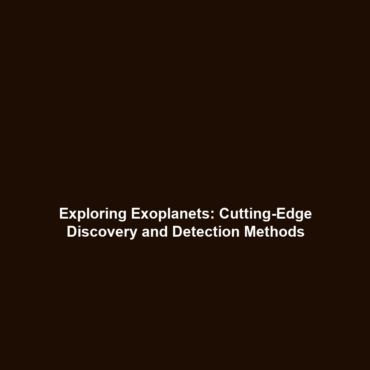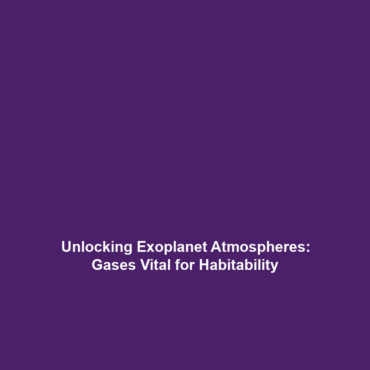Discovery and Detection Methods of Exoplanets
Introduction
The discovery and detection of exoplanets—planets outside our solar system—has revolutionized our understanding of the universe. These methods are not only pivotal in identifying planets orbiting distant stars but also in assessing their potential habitability. Through advanced techniques and technologies, astronomers have opened a new frontier in astronomy, allowing for unprecedented insights into planetary systems. In this article, we delve into the significance of Discovery and Detection Methods, the principles behind them, and their impact on the field of exoplanet research.
Key Concepts of Discovery and Detection Methods
Understanding the major concepts and principles related to Discovery and Detection Methods is crucial for grasping their role in exoplanet research. The two prominent techniques used in this field are:
1. Transit Method
The transit method involves observing the dimming of a star’s light when a planet passes in front of it. This technique provides valuable data about the planet’s size and orbit.
2. Radial Velocity Method
The radial velocity method, also known as the Doppler method, measures the star’s wobble caused by the gravitational influence of an orbiting planet. This allows astronomers to infer the planet’s mass and orbital parameters.
Applications and Real-World Uses
The applications of Discovery and Detection Methods in exoplanet studies are vast and impactful. Notably:
- Identifying Potentially Habitable Worlds: These methods are instrumental in locating planets that may support life, allowing for targeted research in astrobiology.
- Expanding Our Understanding of Planetary Systems: By studying the characteristics of exoplanets, researchers gain insights into the formation and evolution of planetary systems.
- Guiding Future Space Missions: The data obtained from these detection methods help in planning missions aimed at direct imaging and atmospheric studies of exoplanets.
Current Challenges in Discovery and Detection Methods
Despite significant advancements, there are several challenges associated with Discovery and Detection Methods:
- Limited Detection Capabilities: Current methods may miss smaller or less massive planets.
- False Positives: Some signals may be attributed to phenomena unrelated to exoplanets, leading to erroneous conclusions.
- Technological Limitations: The need for more advanced instruments to analyze distant exoplanets effectively is paramount.
Future Research and Innovations
The future of Discovery and Detection Methods in exoplanet research is promising, with several innovations on the horizon:
- Next-Generation Telescopes: Instruments like the James Webb Space Telescope aim to provide unprecedented capabilities in observing distant exoplanets.
- Improved Atmospheric Analysis: Innovations in spectroscopy will allow scientists to analyze the atmospheres of exoplanets for signs of habitability.
- Machine Learning Techniques: Utilizing AI to analyze vast datasets can enhance the detection of exoplanets through more sophisticated algorithms.
Conclusion
In summary, Discovery and Detection Methods are essential in unlocking the mysteries of exoplanets and their potential for hosting life. As technology evolves, so too will our capability to explore these distant worlds further. For more insights on exoplanets, explore our other articles on Exoplanet Formation and Habitability Research.

